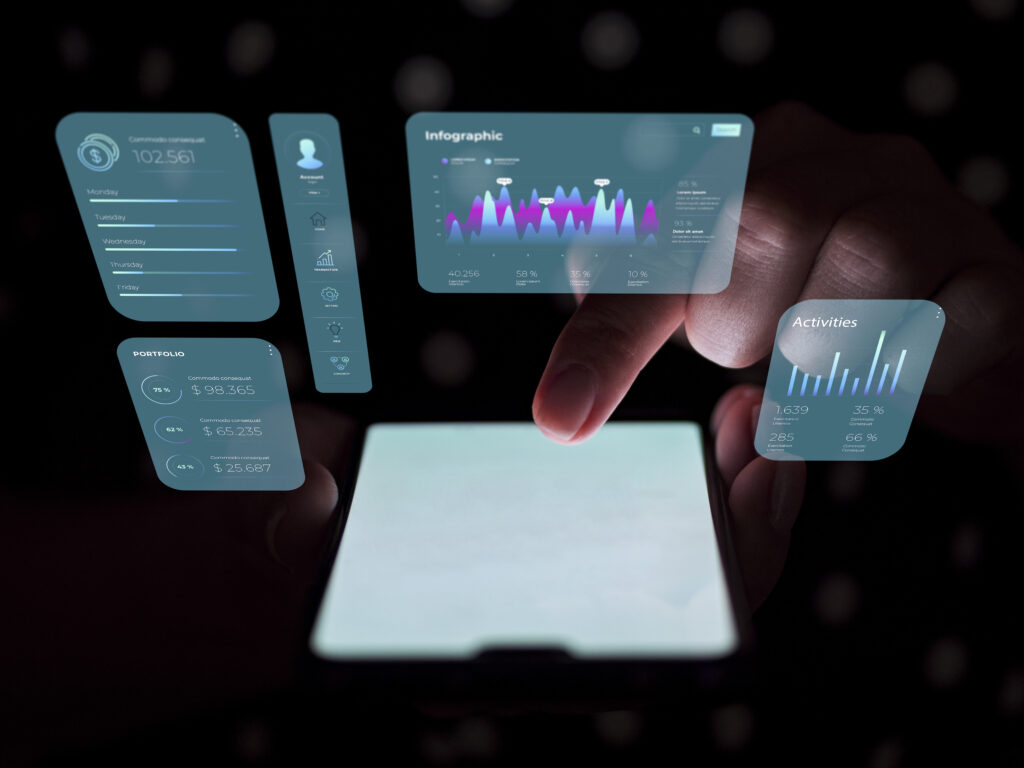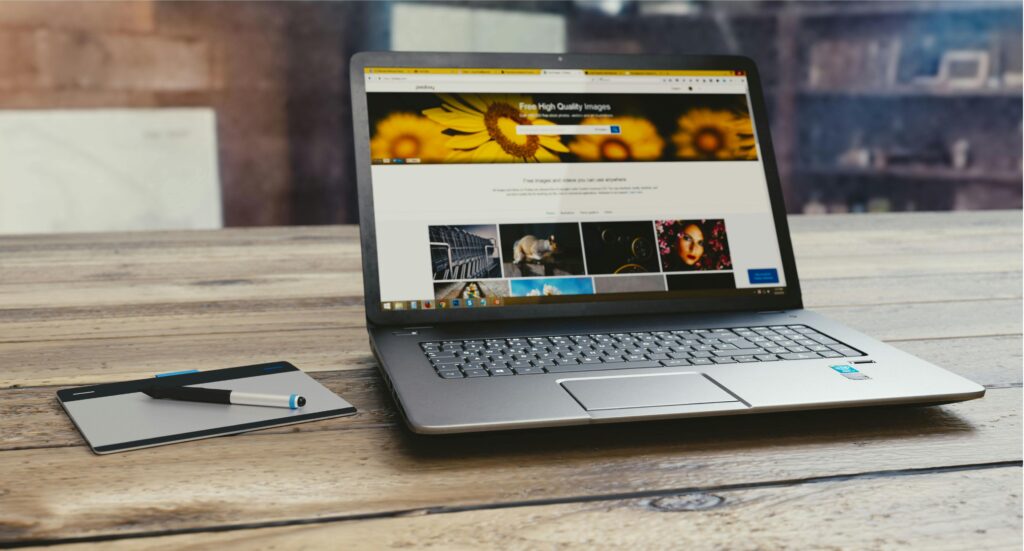As the digital world continues to transform, User Experience Design (UXD) has equally gained importance. Businesses, developers, and designers in 2025 now face the demand to adapt to shifting consumer tastes and technological effects with speed. User experience design is about so much more than just appearances and functionality anymore; it has become so entwined with a brand’s success.
This article will discuss the major UX design trends predicted to reshape the industry in 2025. From AI to voice interfaces, the trends will redefine all possible interactions users will have with digital products. Keeping on top of these trends is important whether you are an expert UX designer or a machinery owner interested in promoting a website or app.
1. Design With a User Experience Powered by AI
Artificial intelligence has already started creating an impact in UX design, but in 2025, it will bring more glory. AI can analyze user behavior, track patterns, and provide personalized experiences. Using the help of machine learning algorithms, designers will provide personalized content, adaptive interfaces, and smarter interactions for the overall enhancement of user experience.
For instance, AI could assist with running a recommendation engine for the e-commerce website, recommend content according to user preference, or it could change the interface dynamically according to the user’s behavior. Personalization in UX will not work just by showing whatever the users are looking for, but in anticipation of their needs, providing an intuitive, seamless experience for them.
Introducing AI into user experience design creates dynamic, interactive interfaces. This means better engagement and satisfaction on the user’s part.
2. Voice user interface
Voice search is quite popular around the globe today, but in 2025, voice user interface, also popularly known as VUI, will rule the roost of user experience design. Devices such as Amazon’s Alexa, Google’s Assistant, and Apple’s Siri have already shown what a voice command could do, and the future is brighter. Since natural language processing would be better, VUI would become more intuitive and responsive to the users, thus delivering a seamless experience.
Thus, for UX designers, voice search and voice-enabled functionality would be a set of must-have websites and apps. It might perhaps be a voice-driven system for getting around a website, or even within e-commerce, there is a voice assistant. It is a completely different dimension of interaction with the user where VUI will be added.
Designing voice user interfaces in user experience will allow businesses to reach wider audiences and, at the same time, open up hands-free and easier ways for users to interact with digital products.
3. Immersive Experiences with Augmented Reality and Virtual Reality
Anytime during the year 2025, with the continuous growth of AR and VR into the next essential design tools for user experience, one industry that avails of both technologies is in retail and perhaps real estate, and most of all, education.
As opposed to actual 3D environments, everyone could interact virtually with virtual objects and in spaces.
Such as in retail, where one could use the AR application to virtually try on clothes. Making use of virtual reality, potential buyers are taken on a tour of homes before deciding case of real estate. It would not just be cool for its sake- it would be designed to improve the user experience by making it even more interactive, fun, and informative.
As such, with the evolution of user experience design, AR and VR will now enable businesses to design more engaging and memorable experiences so that consumers will pay attention to the offer and not to the competition.
4. Micro-Interactions for Enhanced Engagement
Micro-interactions are those very subtle moments that give feedback to a user, like a button turning color upon a click, or a message appearing to congratulate the user on a task performed. By the year 2025, micro-interactions will have found their rightful place in user experience design, making digital interactions more human and instinctive.
These tiny details are usually taken for granted by users, however, they weigh their feelings behind the experience. Micro-interactions give a polished, responsive, and emotionally engaging feel to apps, websites, and devices, while assisting complex tasks to guide users and ease the interface toward user-friendliness and lower friction.
This level of micro-interaction in user experience design can make your product more dynamic, establishing a deeper emotional connection with users.
5. Dark mode and Customizable interfaces
Dark mode wouldn’t be a trend, but by 2025, it is going to be one of the most significant elements in user experience design, as a lot of users demand dark modes due to their aesthetic and practical benefits. Dark mode not only reduces eye strain but also saves battery life in OLED screens and improves reading in dimly lit spaces.
Dark mode would be nothing in itself; instead, it would go hand in hand with configurable interfaces that would be the norm. It would allow users to have the freedom of making changes in their color schemes, font sizes, or layout styles according to their preferences. This degree of self-tailoring would make digital offerings more accessible and allow users to feel more in charge.
The best combination that can be integrated into user experience design is providing alternatives and a dark mode. Thus, digital products can be very inclusive and convenient for every user, enhancing satisfaction and retention.
6. Minimalistic Design with Bold Typography
Minimalism will remain a design trend as we move into 2025. By minimizing what is offered in the basic layout to the barest essentials, clean, uncluttered designs appear that users find easy to navigate. Minimalism removes distractions from the users so that they can focus on interacting with the designs and consuming their content.
Bold typography will be an indispensable tool in furthering this trend. The strong typeface selection combined with large, punchy characters and clear typographic hierarchy will, as much as strengthen legibility, impart dramatic visual impressions. Typography will be the designer’s weapon and tool for effecting great and much-needed pathing to steer user intent through brand communicable content.
The user experience design with minimalistic and bold typography looks forward to clarity and simplicity, letting the users engage with a digital product devoid of confusion and clutter.
7. Sustainable Design Practices
Sustainability is becoming more and more an issue for end users and companies alike in terms of user experience design. By 2025, eco-conscious design practices will become a major factor in how brands envision digital experiences. Users are now becoming conscious of how their digital actions are affecting the ecosystem, and companies have to respond.
Sustainable UX design strategies can incorporate whatever it takes to maximize energy efficiency for the design of websites or apps, restrict resource use, or even design digital products tailored to active sustainable behaviors, such as minimizing waste or carbon footprint. Eco-friendly UX design will aim to reduce the overall data usage for mobile apps to operate well without exhausting energy, in terms of conserving energy.
In the umbra of sustainable user experience design productive company can create resonance for its brand, especially among the environmentally-conscious members of society, invariably establishing an image of innovation and responsibility.
8. Neumorphism: The New Design Aesthetic
Neumorphism design diction that acts as a junction between skeuomorphism and flat design- will materially flourish in the year 2025. It gives the surface a soft feel, almost like the buttons and icons were being “pushed out,” producing a tactile or 3D perception. This is unlike the old school thinking of interface designs, whereby real-world objects appear embedded inside the computer for an immersive and rich user experience.
The successful application of neumorphism in user experience design requires a close balance between aesthetics and usability. In cases where the effect is overused, this can instigate confusion; thus, it remains for the designer to use the effect in moderation, so that the interface is intuitive and easy to navigate.
Therefore, by applying neumorphism on surfaces, companies can develop modern-looking user interfaces that appeal through looks and provide a memorable and engaging experience.
9. Data Privacy and Transparency in UX Design
In 2025, concerns for the online privacy of users will make data protection and transparency major elements on the agenda of user experience design. Websites and apps need to have straightforward and readily accessible privacy agreements and data use notices.
Another important trend will be integrating privacy controls directly into the user interface, thus enabling users to customize how much data they share and with whom. Transparent and ethical data practices will not only create trust but also evidence compliance with international privacy regulations.
Designing user experience with privacy in mind will, therefore, solidify the bond between businesses and their users and increase satisfaction and brand loyalty among their users.
10. Inclusive and Accessible UX Design
By translating these ideals into a culture of business practice through committed leadership, inclusivity, and accessibility will move from being a good-to-have to being seen as a must-have in the emerging years of 2025. User experience design for inclusivity will reach its climax in 2025 in terms of designing products with accessibility-for-all-audiences-in-mind, irrespective of the audiences’ abilities or backgrounds.
Screen reader compatibility, high-contrast colors, and navigation by voice will be some inclusive requirements that brands serious about serving the entire spectrum of potential audiences must comply with. UX designers will also need to focus on culturally inclusive interfaces. In other words, pictures, languages, and actions within a given design should speak to and resonate with audiences from different backgrounds.
Inclusion and accessibility will provide not only the best experience for the widest possible audience but also an opportunity for organizations to publicly demonstrate their commitment to social responsibility.
Conclusion
To be sure, future user experience design is determined in 2025 by simultaneous growth in technology and creativity, and in user-centered approaches to arrive at trends such as AI personalization, to what will probably be realities such as immersive AR or VR experiences. This makes it a rather exciting space for equal opportunity for businesses and designers to fulfill. If they are ahead of those trends and ready to embrace innovations, their digital products will always stay relevant, interesting, and reactive to user demands.
For instance, bringing the trends into practice for user experience, and they will usher in much deeper connections between brands and their customers, which will set the grounds for long-term success in the fast-changing digital world.



